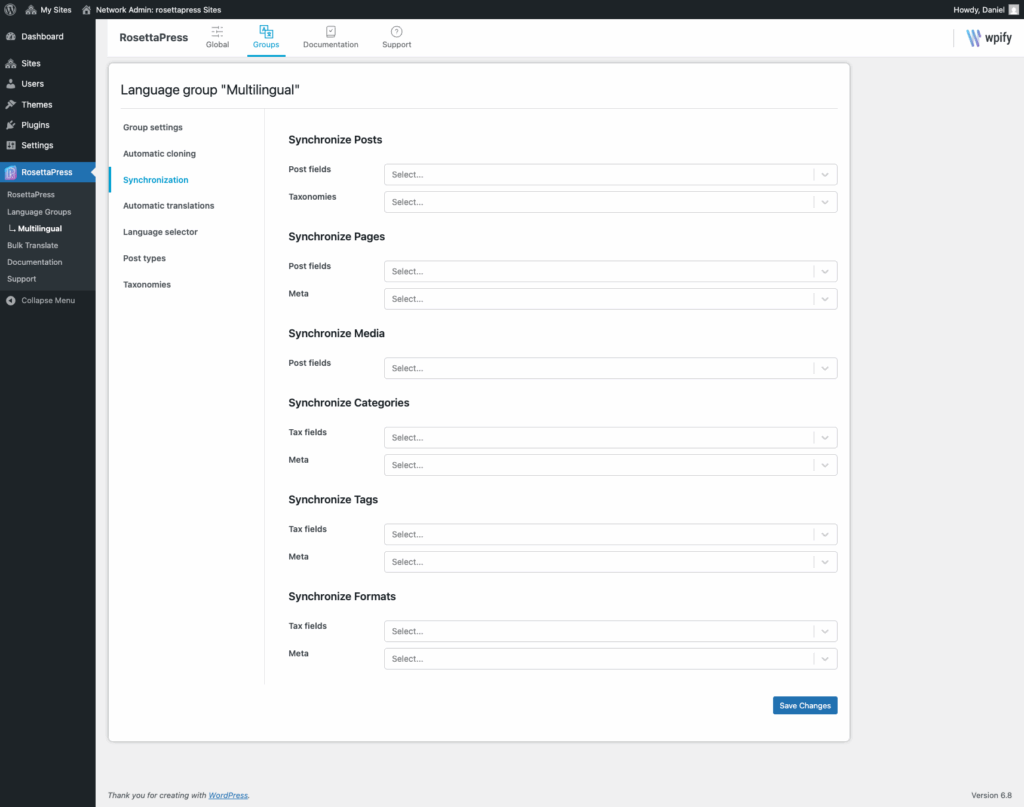Synchronization in RosettaPress gives you precise control over which parts of your content stay in sync across your multilingual sites. While translations are often unique, certain fields or taxonomy terms may need to remain consistent between languages.
This feature is especially useful when working with structured content like landing pages, product templates, or shared categories.

What Can Be Synchronized?
Post Fields
You can choose to synchronize the following fields for any supported post type:
post_title– the page or post titlepost_content– the full content areapost_excerpt– the short summary (if used)
When these fields are synchronized, any changes made on the Primary Site will automatically update the same field across all linked translations.
Taxonomies
All taxonomies assigned to the selected post type can be synchronized. This includes:
- Categories
- Tags
- Custom taxonomies like “Product Categories” or “Event Types”
Each taxonomy term can sync across languages, ensuring structure and relationships remain consistent.
Taxonomy Term Fields
When syncing taxonomy terms, the following fields can be kept consistent across sites:
name– the term’s nameslug– the URL-friendly version of the termdescription– the optional description shown in some themes
How to Enable Synchronization
- Go to RosettaPress → Language Groups → Synchronization
- Select a post type from the dropdown.
- Check the fields you want to sync (title, content, excerpt).
- Select which taxonomies you want to synchronize.
- Check which fields of those taxonomies should stay in sync.
- Click Save Changes.
Once enabled, any time a synced field is updated on the Primary Site, RosettaPress will automatically update it on all connected translations.
Synchronization gives you the flexibility to translate where needed, and sync what must stay consistent – giving you full control across your multilingual setup.